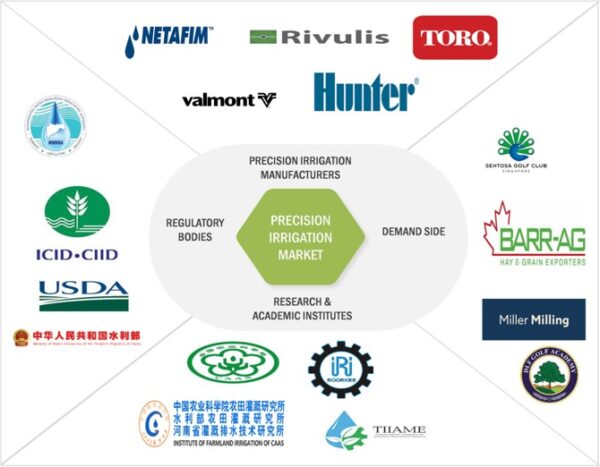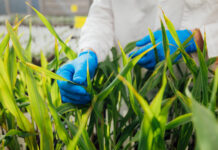As South Africa faces growing water security challenges, precision irrigation is no longer just a choice—it’s a necessity. The numbers speak for themselves, and the benefits are clear: cut water usage by up to 50% and fertiliser needs by 30% providing increased yields, better crop quality, and a more resilient farming system. Precision irrigation enables us to do more with less by delivering the right amount of water and nutrients exactly where and when they are needed.
Embracing such technology will help us meet continuous market demands, improve food security, and support sustainable farming practices. Amid debates on municipal mismanagement and wasted water in other sectors, agriculture must tighten the belt with increasingly efficient irrigation. Agriculture takes centre stage, being the largest consumer of water in South Africa at approximately 60% of total usage. With increasing pressure to reduce water consumption, the agricultural industry finds itself at the forefront of the battle for sustainability.
Precision irrigation refers to an advanced system of watering landscapes, agricultural fields, and other green spaces that leverages technology to optimize water usage. These systems incorporate a variety of sensors, weather data, and automated controls to deliver precise amounts of water based on the plants specific needs, soil conditions, and environmental factors. By using real-time information and predictive analytics, precision irrigation systems aim to enhance water efficiency, reduce waste, and promote sustainable water management. The goal is to ensure that plants receive the optimal amount of water at the right times, which can lead to healthier plant growth, cost savings, and conservation of water resources.
According to MarketsandMarkets The precision irrigation market is estimated at USD 4.18 billion in 2024 and is projected to reach USD 6.29 billion by 2029 at a CAGR of 8.5% Approximately 40% of the world’s food is produced from irrigated land. Precision irrigation offers various advantages, such as reduced farm labour expenses, reliability, 24/7 access, and improved sustainability and productivity. Precision is a promising approach to minimize water wastage in irrigation while improving water use efficiency. Further, governments in developing countries are undertaking several initiatives to mechanize the irrigation system and water conservation initiatives. These initiatives will accelerate the adoption of precision irrigation in developing regions.
KEY STAKEHOLDERS IN PRECISION IRRIGATION MARKET ECOSYSTEM
The United Nations World Water Development Report 2023 indicated that climate change will exacerbate water scarcity in regions already affected, such as the Middle East and the Sahara, while impacting currently water-abundant areas like Central Africa, East Asia, and South America. With agriculture consuming 70% of global water resources, enhancing irrigation efficiency through precision irrigation is vital for sustainability, conserving water, and improving water management, especially in urban areas. This highlights the crucial importance of drip irrigation in promoting agricultural sustainability and effective water management. As regions globally seek efficient solutions to address escalating water scarcity and ensure food security, this will likely drive substantial growth in the precision irrigation market.
Precision irrigation systems integrated with the Internet of Things (loT), artificial intelligence (Al), and machine learning (ML) technologies are reshaping water management in agriculture and landscaping. With increased efficiency, precision, and user-friendliness, these systems are a game-changer. loT in precision irrigation systems enables devices and sensors to communicate and share data, facilitating real-time monitoring and control of irrigation. This helps optimize water use through comprehensive data analysis.
The increased mechanization and adoption of smart technologies for agricultural activities, government initiatives to promote water conservation, and growth in awareness among farmers about the benefits of adopting precision irrigation systems are driving market growth. Most developing countries across the globe make use of irrigation technologies like drip irrigation.
The automation of drip irrigation has become increasingly popular in the Asia Pacific due to the higher consistency in yields, reduced power usage compared to sprinkler irrigation, the possibility of being used in smaller pieces of land, and the higher efficiency in applying fertilizers with little or no leaching. Increasing awareness of sustainable farming practices and government incentives are further driving the adoption of drip irrigation. Al & ML algorithms dominate the precision irrigation market because they offer unparalleled accuracy in predicting crop water needs by analyzing vast amounts of data from various sources, including soil moisture, weather patterns, and satellite imagery.
These technologies enable real-time, data-driven decisions that optimize irrigation schedules, reducing water usage and enhancing crop yields. Additionally, Al-driven systems can learn and adapt to changing environmental conditions, making them more efficient. Their ability to automate complex decision-making processes drives widespread adoption, particularly as water scarcity and sustainable farming practices become more critical.









